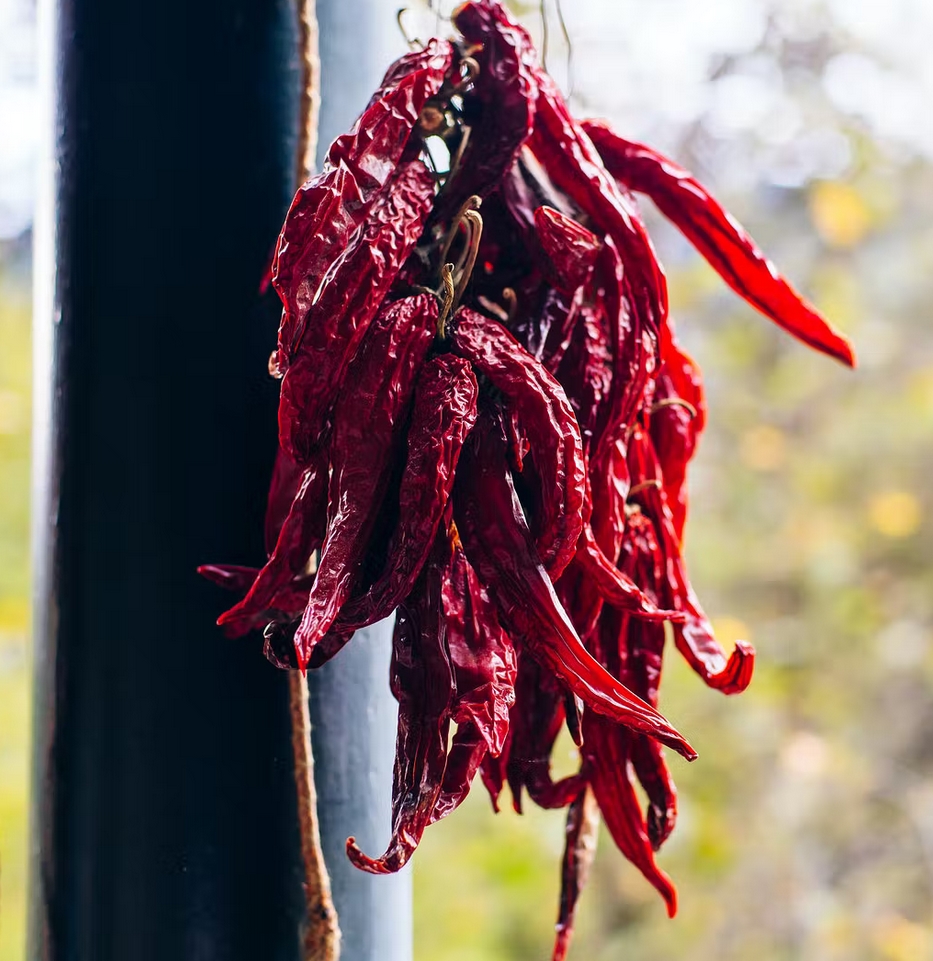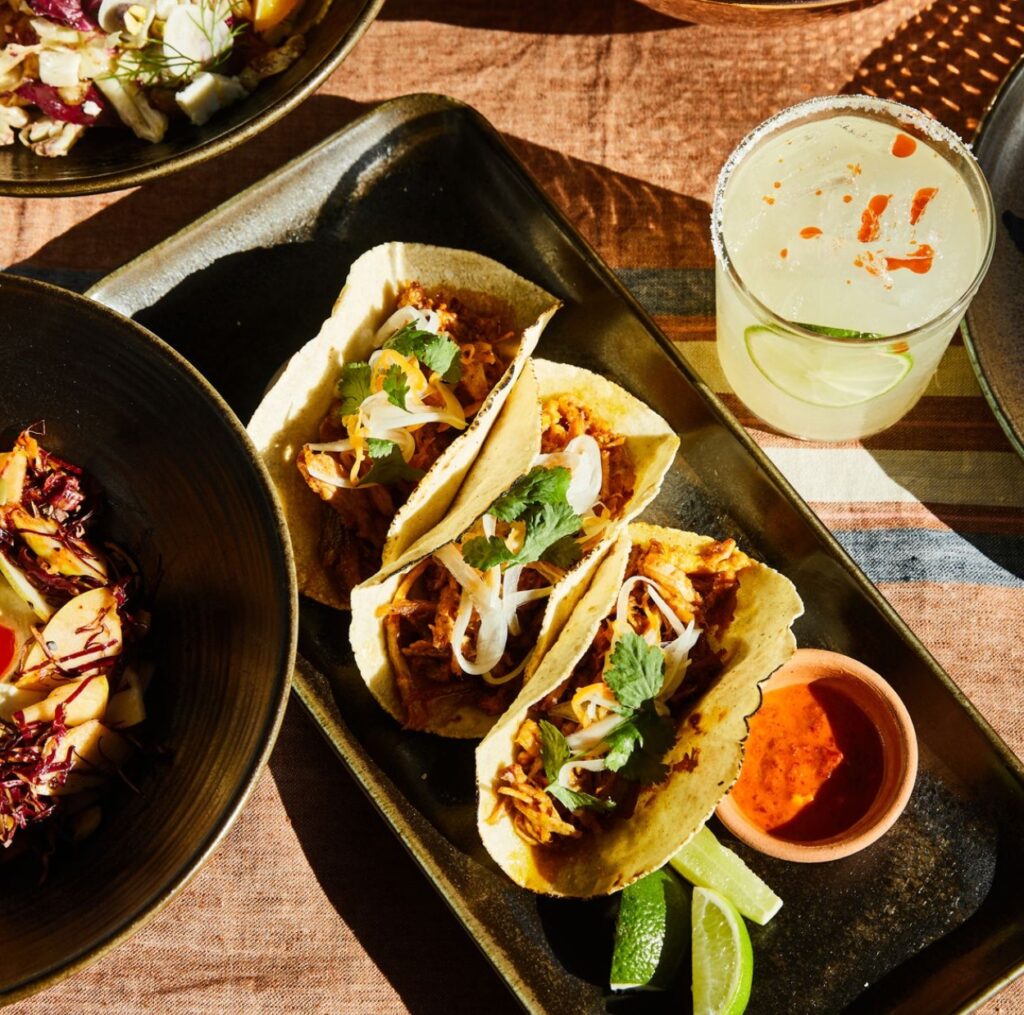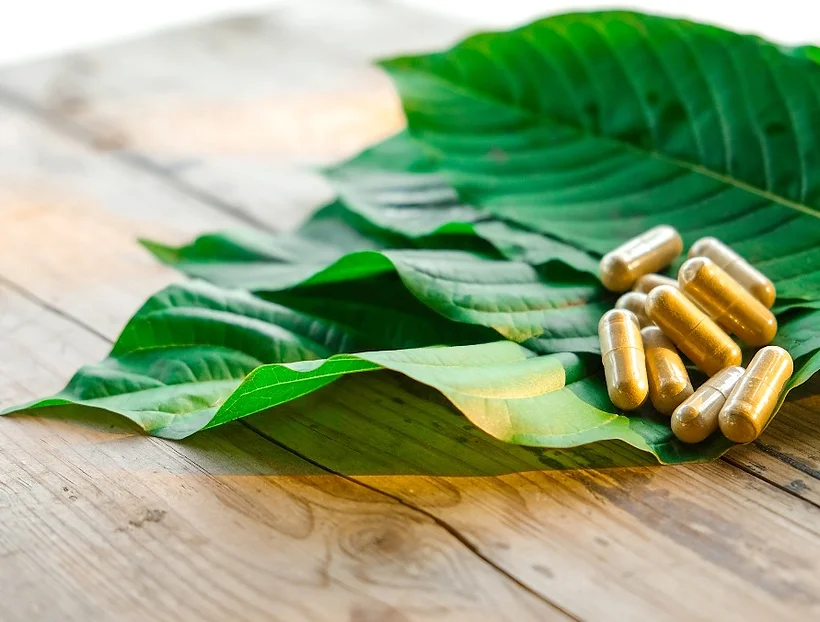If you travel to New Mexico in the late fall, you will see lots of red strings of chilies hanging on seemingly every front porch. These beautiful decorations are called chile ristras, and they are one of my favorite things about New Mexico.
What is a chile ristra?
In Spanish, ristra means string, and chile ristras are just a string of spicy chile peppers tied together. These decorations double as a great food ingredient commonly used in dishes such as enchiladas, posole, and carne adovada. The red chile originally was hung up as a way of preserving the chile and keeping it inaccessible to birds, who love to peck at the seeds. As years went by and food preservation became less necessary for society, more and more New Mexicans began to use ristras as just a decoration, and keep a bag of red chile pods in their kitchen.

Where to hang a chile ristra?
Farmers Chile Market wrote a pretty good guide about this, but I will summarize. Keeping a red chile ristra outside of the elements will keep it bright and fresh for longer. Wind that will break the chile peppers is the most dangerous thing a ristra can be exposed to, followed by rain and sun. To keep your string of hot sandia chile peppers good as long as possible, hang it in your kitchen.
Why are chile ristras special?
In New Mexico, hanging a chile ristra near your door is felt as a welcoming sign. It gives a homey atmosphere, along with a kick of color. These strings of peppers also add a kick of color to any room or layout. More than just that, there are many different kinds of chile used to make ristras. From the hot sandia to the super hot pequin chile, along with garlic and other things, ristras are popular throughout the southwestern United States. Because different chilies are used, many different shapes and sizes are also available. My favorite ristra shape is a heart, which is commonly made using pequin chile peppers.

The Spice of the Southwest
Hatch, New Mexico is called the chile capital of the world for a reason. Although you can find chile ristras everywhere in New Mexico, Hatch really has them everywhere. Santa Fe and Albuquerque also have many old adobe buildings adorned with these vibrant strings of spicy chili peppers. The food in New Mexico is a good amount spicier than other states in the US. In some restaurants, the heat level is so high that you might want to order milk with your meal.
The New Mexico Chile Season
Every year in August New Mexico really comes alive with the sounds and smells of green chile roasting. As Hatch chile ripens and turns red, there will be ristras adorning entryways around the state. The sweet and spicy red chilies are an amazing flavor, but the sugar ferments out during the natural drying process. In New Mexico, people ask the question “Red or green?” frequently. It is because chile is a fundamental part of New Mexican cuisine, culture, and tradition. Generally, the best chile comes in September, but October is also a great time to visit New Mexico for chile and also the world’s largest Balloon Fiesta.

Famous New Mexican Food
Many delicacies exist in New Mexico, and you better believe they contain green and red chile.
First is green chile stew, a hearty soup which often contains chunks of beef, potatoes, and lots of spicy Hatch green chile. It is served with a buttered tortilla for a little extra flavor. Enchiladas are another dish which is huge in New Mexico, and once again will require an answer to the red or green question. Green chile cheeseburgers are arguably New Mexico’s famous food, and showcases New Mexico’s unique blend of Mexican and American culture. Finally, red chile posole is everyone’s favorite soup when the weather gets cold. This nixtamalized corn based soup is also served with a tortilla, and generally comes with some delicious stewed pork as well.
History of New Mexico Chile
Chile has been grown in New Mexico for hundreds of years, but it was very different in the past than now. For one thing, chile roasting has become a business that thousands of people do every year, where in the past people would take chile home raw. Another difference is that chile varieties are different now. The famous Hatch chile is derived from NuMex no. 9, a chile variety developed by Fabian Garcia of NMSU in the early 20th century.

After him, many great breeders have followed, such as Roy Harper and Roy Nakayama. Nowadays, the variety of chile is astonishing, and more and more roasting techniques are becoming popular. Ristras are still used in the modern day as a decorative way of storing chile as well. Some things change and some things remain the same.





